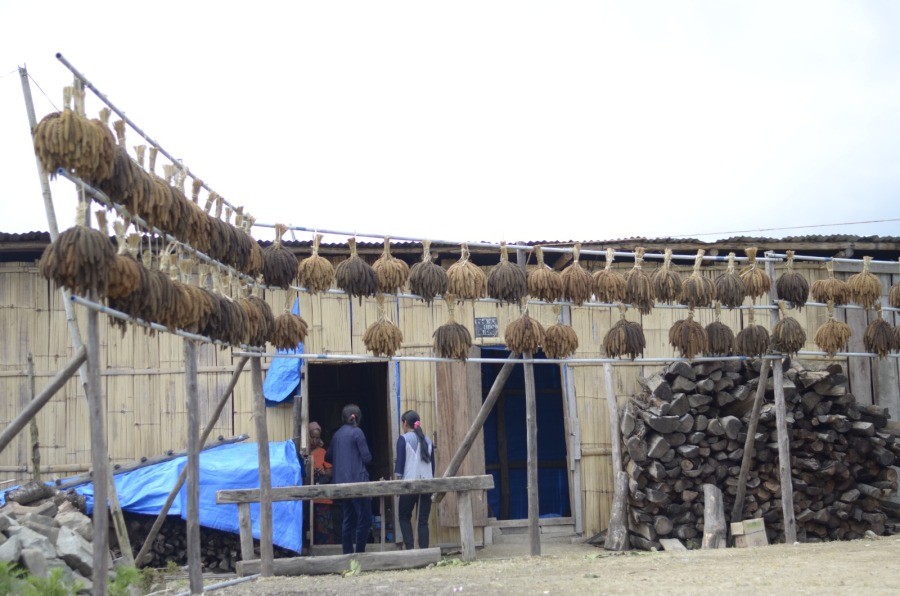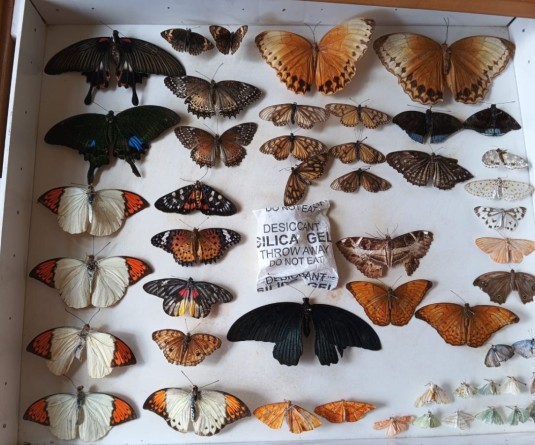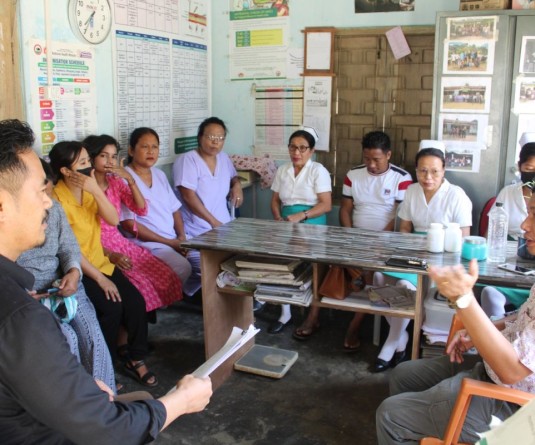Bunches of millets hung in rows in Chingmei village in Tuensang district. (Morung Photo)

Morung Express News
Tuensang | August 30
Chingmei village in Tuensang district is emerging as a beacon of success with its adoption of millet cultivation leading to bountiful harvest and rekindling community spirit.
Breaking away from conventional farming practices, Chingmei village, since 2019, have embraced the cultivation of millets, which have long been overshadowed by modern crops.
All the 500 plus households at Chingmei village, in camaraderie, cultivates the cereal crop with sowing season in February and harvest in the month of August.
Traditional millets like foxtail millet finger millet require significantly less water compared to mainstream crops like rice and wheat. This shift not only reduces the village’s ecological footprint but also builds resilience against climate uncertainties.
Chingmei village revived the millet cultivation after the Millet Sisters started promoting the crop. The millet cultivators in Tuensang district have also been sharing the millet seeds to other states like Arunachal and Mizoram.
This year, Chingmei village harvested more than 13 thousand ‘tins’ of millet winning hands down a competition organized by the Department of Agriculture, Tuensang for the maximum millet production under village category.
The village received a certificate, cash prize and one millet processing machine during the district level awareness programme cum celebration of International Year of Millet organized under the theme ‘Harnessing millet for food security and sustainable agriculture on August 30 at Town Hall, Tuensang.
Deputy Commissioner Tuensang, Lithrongla Tongpi Rutsa, while taking the example of ‘Millet queen of India,’ Lahiri Bai, who preserved more than 150 varieties of millets in her home, encouraged the farmers to preserve the millet grain and cultivate those which are suitable with the type of soil in the region.
Rutsa also remarked that, “If someday there’s a change in the policy to stop giving free and subsidized rice then there is a possibility of a famine and this thought makes it very important to preserve and cultivate more millet grains.”
While millet is considered a 'rich man’s food' as it is not readily available in the market, Rutsa said Eastern Nagaland region have plenty and are rich in millets.
Delivering the keynote address, T Supongmar Longchar, District Agriculture Officer said the revival of millet in Tuensang is a history in the making for Nagaland and it starts from Tuensang district. He also expressed admiration at the creativity and preservation of the millet and said that it is like a lost gold found.
A power point presentation highlighting the millet cultivation in Tuensang was given by Mongkucholen, Agriculture Officer, Tuensang. He said at present, 10 villages in Tuensang and seven villages in Longkhim were practicing millet cultivation.
He also highlighted several activities undertaken by the department which included awareness programmes and seed distribution etc.
A competition on millet recipe, and maximum millet production – individual and village category was also held. Chingmei village won the maximum millet production under village category.
In the millet recipe competition, 1st prize was bagged by Chipensenyen, SHG of Tuensang town, with Moutshou SHG of Chendang village and Khanyang Sao of Chingmelen village winning 2nd and 3rd prizes respectively. Consolation prizes were also awarded to Millet Sisters of Chingmei village and Ophai Doyang SHG of Kejok village.
In the maximum millet production under individual category, Sejang of Chingmei village (57 tins) won the 1st prize followed by M Khumla of Chendang village (41 tins) and B Nokching of Waoshu village (32 tins) winning the 2nd and 3rd respectively.




.jpg)
